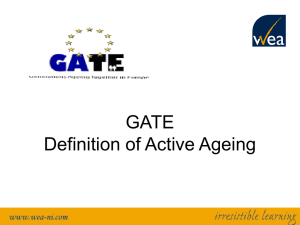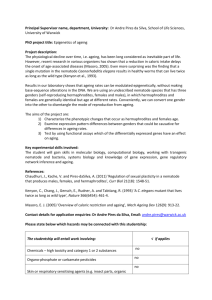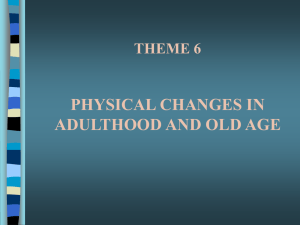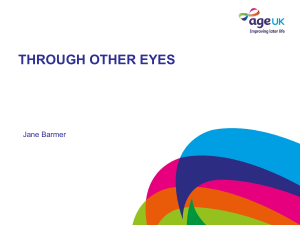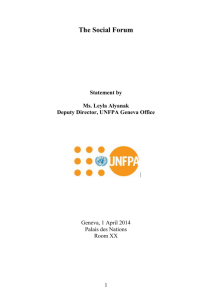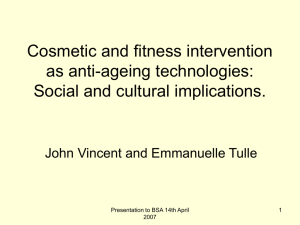Microsoft Word 2007 - UWE Research Repository
advertisement
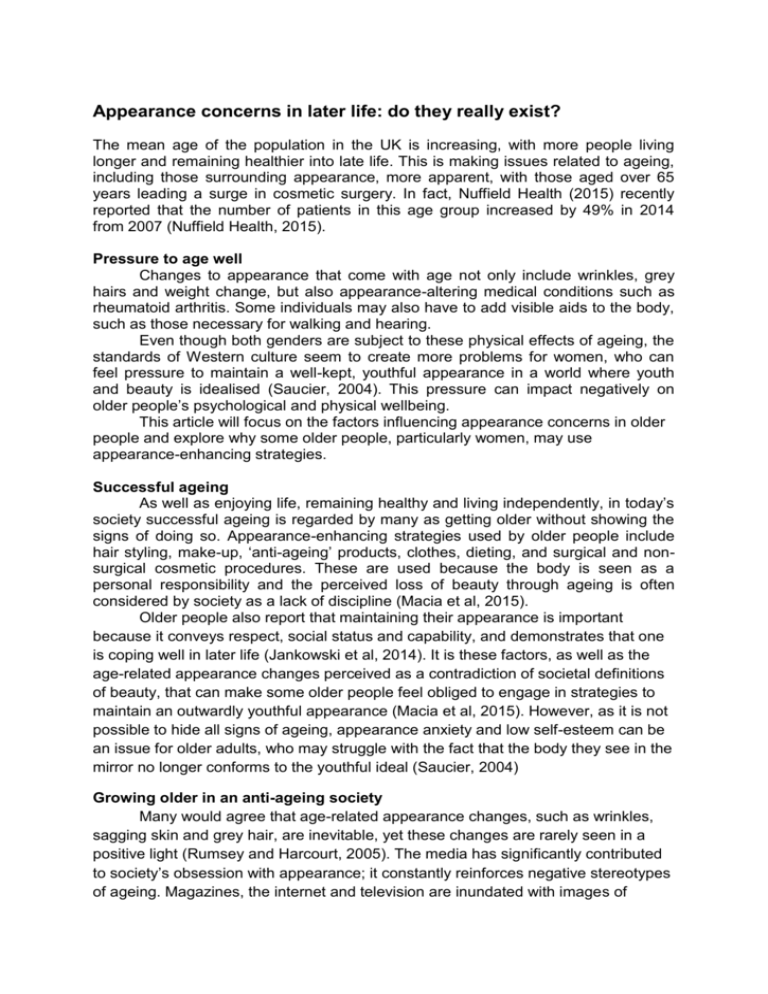
Appearance concerns in later life: do they really exist? The mean age of the population in the UK is increasing, with more people living longer and remaining healthier into late life. This is making issues related to ageing, including those surrounding appearance, more apparent, with those aged over 65 years leading a surge in cosmetic surgery. In fact, Nuffield Health (2015) recently reported that the number of patients in this age group increased by 49% in 2014 from 2007 (Nuffield Health, 2015). Pressure to age well Changes to appearance that come with age not only include wrinkles, grey hairs and weight change, but also appearance-altering medical conditions such as rheumatoid arthritis. Some individuals may also have to add visible aids to the body, such as those necessary for walking and hearing. Even though both genders are subject to these physical effects of ageing, the standards of Western culture seem to create more problems for women, who can feel pressure to maintain a well-kept, youthful appearance in a world where youth and beauty is idealised (Saucier, 2004). This pressure can impact negatively on older people’s psychological and physical wellbeing. This article will focus on the factors influencing appearance concerns in older people and explore why some older people, particularly women, may use appearance-enhancing strategies. Successful ageing As well as enjoying life, remaining healthy and living independently, in today’s society successful ageing is regarded by many as getting older without showing the signs of doing so. Appearance-enhancing strategies used by older people include hair styling, make-up, ‘anti-ageing’ products, clothes, dieting, and surgical and nonsurgical cosmetic procedures. These are used because the body is seen as a personal responsibility and the perceived loss of beauty through ageing is often considered by society as a lack of discipline (Macia et al, 2015). Older people also report that maintaining their appearance is important because it conveys respect, social status and capability, and demonstrates that one is coping well in later life (Jankowski et al, 2014). It is these factors, as well as the age-related appearance changes perceived as a contradiction of societal definitions of beauty, that can make some older people feel obliged to engage in strategies to maintain an outwardly youthful appearance (Macia et al, 2015). However, as it is not possible to hide all signs of ageing, appearance anxiety and low self-esteem can be an issue for older adults, who may struggle with the fact that the body they see in the mirror no longer conforms to the youthful ideal (Saucier, 2004) Growing older in an anti-ageing society Many would agree that age-related appearance changes, such as wrinkles, sagging skin and grey hair, are inevitable, yet these changes are rarely seen in a positive light (Rumsey and Harcourt, 2005). The media has significantly contributed to society’s obsession with appearance; it constantly reinforces negative stereotypes of ageing. Magazines, the internet and television are inundated with images of slender, youthful women and handsome, chiselled men. This has created a generation that is uncomfortable with growing old and believes that age-related appearance changes are something to be prevented or masked, rather than embraced (Saucier, 2004). Although the pressure on men’s appearance is growing, these media messages tend to affect women more due to what researchers refer to as the ‘double standard of ageing’ (Sontag, 1979). This term refers male ageing being viewed as a positive thing, leading them to become more distinguished and refined, whereas female ageing is perceived negatively and thought to lead to the loss of looks and value in society. Appearance changes that can show advanced age, such as wrinkles and grey hair, present a significant threat to women’s sense of identity and can result in feelings of invisibility and a lack of recognition in a world where the emphasis on beauty and youth is overwhelming (Halliwell and Dittmar, 2003). It is these feelings of invisibility that have been stated by women to be one of the main reasons they are dissatisfied with their appearance and use appearance-enhancing techniques (Hurd Clarke and Griffin, 2008). From make-up and hair dye, to surgical and non-surgical cosmetic procedures such as facelifts and fillers, the consumer society now offers an increasing number of strategies which can be used by women to disguise the ageing body and reduce the stigma that can come with age. If one can use these strategies to reduce or remove the signs of ageing from their body, they feel they become socially visible and therefore valued in society (Hurd Clarke and Griffin, 2008). However, rather than feeling pressured, some researchers argue that women engage in appearance-enhancing strategies through their own free will. They are empowered and enjoy improving their image, which can result in increased selfconfidence as well as maintaining a socially acceptable appearance (Muise and Desmarais, 2010). Self-acceptance with age While some women do struggle with appearance concerns in later life, some women appear to reach a place of self-acceptance where physical appearance is less important to them (Tiggeman, 2004). Some women do so through a variety of adjustments in their thinking, for example, coming to accept their appearance changes as outside of their control or lowering their expectations (Tiggeman, 2004). Additionally, older people are not exposed to the social pressures that emphasise the importance of appearance (Halliwell and Dittmar, 2003). Consequently, their attention shifts from concerns about appearance to concerns around their health and what they can do with their body (Baker and Gringart, 2012). However, women’s perceptions of the body can be contradictory and it is not unusual for them to hold both positive and negative attitudes about their bodies (Marshall et al, 2014). For example, women can complain about parts of their bodies they dislike due to age, yet also report overall appearance contentment (Liechty, 2012). They also report using anti-ageing lotions and potions, but have little belief that these work and claim they are embracing natural ageing (Muise and Desmarais, 2010). Lastly, due to advances in health-care, older people are feeling increasingly fit into later life and a discrepancy can occur when how ones looks on the outside does not match to how one feels on the inside (Baker and Gringart, 2012). Conclusion The appearance changes associated with ageing are experienced by everyone; however, it is how people perceive these changes that is key. It is not clear whether appearance satisfaction increases or decreases with age, because each person’s experiences, opinions and attitudes towards ageing will vary. It is clear, however, that some older people, particularly women, invest time and money in maintaining their appearance; yet some feel pressurised into this as ageing contradicts Western society’s youth and beauty ideals. In an image-focused society, it is likely that appearance concerns will become the norm for the older people of the future, which is concerning as the older generation have always been the ones society looks up to




